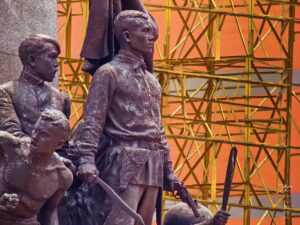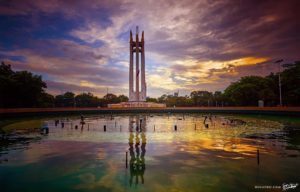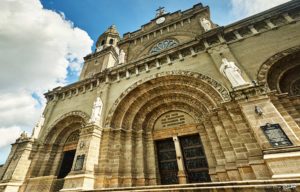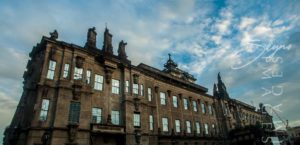
Makati City
The city of Makati is a highly urbanized place in the country, making it the nation’s financial center. As a result, it has the highest
Discovering the charms of Binondo, the world’s oldest Chinatown, proves to be a thrilling adventure for any traveler. Situated at the core of Manila, the district becomes a must-visit for those seeking both excitement and cultural immersion. Binondo, a hub of trade and commerce, buzzes with life, offering a vibrant atmosphere where diverse vendors cater to a wide range of interests.
Discovering the charms of Binondo, the world’s oldest Chinatown, proves to be a thrilling adventure for any traveler. Situated at the core of Manila, the district becomes a must-visit for those seeking both excitement and cultural immersion. Binondo, a hub of trade and commerce, buzzes with life, offering a vibrant atmosphere where diverse vendors cater to a wide range of interests.
Discovering the charms of Binondo, the world’s oldest Chinatown, proves to be a thrilling adventure for any traveler. Situated at the core of Manila, the district becomes a must-visit for those seeking both excitement and cultural immersion. Binondo, a hub of trade and commerce, buzzes with life, offering a vibrant atmosphere where diverse vendors cater to a wide range of interests.


In the lively heart of Binondo, Ongpin Street takes center stage as a must-visit for food enthusiasts. A culinary adventure kicks off with a delightful spread featuring delectable vegetable dumplings and savory fried siopao, a delightful pork bun variation. The tempting aroma of machang, a scrumptious sticky rice dish teeming with chicken and mushrooms, wafts through the air, making it impossible to resist. To add to the culinary delights, steaming bowls of Szechuan-style soup, flavorful noodles, and soothing congee provide a delightful symphony for the taste buds.

Wandering through the bustling streets, the temptation of traditional Chinese bakeries showcasing delectable mooncakes is impossible to ignore. Pausing at a charming tea shop provides a delightful opportunity to savor fragrant Chinese tea and cleanse the palate.



Binondo isn’t just a haven for delicious treats; it’s also a treasure trove of cultural history and heritage. For photography enthusiasts, guided photo walks are available to capture the true spirit of Binondo‘s streets and alleys. Everywhere one turns, vendors proudly present an array of lucky charms, herbal remedies, elaborate wooden carvings, and mesmerizing traditional paintings.


For those with a passion for shopping, negotiating prices is a key element of the Binondo experience. Shop owners actively welcome visitors to engage in friendly haggling, adding a dynamic touch to the shopping adventure.

Beyond the excitement of exploring diverse shopping and culinary delights, delving deeper into the district unveils charming Chinese temples, colorful signs, and intricate maze-like alleyways. These elements contribute to the lively atmosphere that defines Binondo.


ABOVE:
ABOVE:

RELATED STORIES

The city of Makati is a highly urbanized place in the country, making it the nation’s financial center. As a result, it has the highest

The Cultural Center of the Philippines or CCP was founded in 1966 under the directive of former President Ferdinand Marcos, in order to reinforce and

The San Agustin Museum is located adjacent to the UNESCO World Heritage Site, San Agustin Church. It is located in Intramuros—the walled city of Manila—and

San Sebastian Church is a Roman Catholic Minor Basilica located in Quiapo, Manila. It’s also known as Minor Basilica of San Sebastian or San Sebastian


I’m looking forward to the stories and images leaving a lasting positive impression on you, just as they have on me. Stay connected with us on social media for a weekly exploration of travel assignments and breathtaking visuals. Our focus is on championing local tourism, showcasing small businesses, and honoring the magnificence of the Philippines through the content we curate. Join us in spreading the word by clicking the ‘share’ buttons below. Your support means the world to us.
EXPLORE MORE about

The San Agustin Museum is located adjacent to the UNESCO World Heritage Site, San Agustin Church. It is located in Intramuros—the walled city of Manila—and

Known as one of the most important baroque churches in the Philippines and as one of the only four baroque churches in the Philippines that

The Bonifacio Monument, also called Bonifacio Monumento or Monumento, proudly stands in Caloocan City, Metro Manila. It is a powerful symbol created by the National

One of Quezon City’s main parks is the Quezon Memorial Circle, which is located in Quezon City and is surrounded by an elliptical road, making

The Manila Abbey San Beda, or formally known as Abbey of Our Lady of Montserrat, is a Benedictine men’s monastery located along the streets of

The Cultural Center of the Philippines or CCP was founded in 1966 under the directive of former President Ferdinand Marcos, in order to reinforce and

It is the home of the popular Asian elephant, Mali, as well as 90 other species. As well as being a landmark in Manila, the

The city of Makati is a highly urbanized place in the country, making it the nation’s financial center. As a result, it has the highest

As the nation’s first ever world-class marine theme park, Manila Ocean Park is located in Ermita Manila, within the Philippines’ largest urban resort/aqua-themed hotel complex

Located along Roxas Boulevard, Manila and adjacent to the century-old walled city of Intramuros, the Luneta National Park, or “Luneta” as many refer to it,

Casa Manila is a living museum that features the lifestyle of a wealthy Filipino family living during the last years of the Spanish colonial period,

The Polo Church, formally known as the San Diego de Alcala Church, resides in the Polo neighborhood of Valenzuela, Manila. This church has a captivating

It is considered to be one of the world’s great harbors, the Manila Bay, and it serves as the Port of Manila, Philippines. Having once

Originally built in 1880, the Manila Cathedral is the current version of the longstanding Church of Manila. It is a masterpiece of architecture that was

Manila American Cemetery and Memorial is located in the heart of Taguig City on the lands of Fort Bonifacio and serves as the largest grave

As one of the oldest cemeteries in Manila, Campo Santo De La Loma, commonly referred to as the La Loma Cemetery, is one of the

The Padre Pio Chapel, also known as the St. Pio of Pietrelcina Chapel, holds a special place in my heart as a photographer. It revealed

Plaza Miranda is a public square bounded by Quezon Boulevard, Hidalgo Street and Evangelista Street in Quiapo, Manila. It is the plaza which fronts the

San Sebastian Church is a Roman Catholic Minor Basilica located in Quiapo, Manila. It’s also known as Minor Basilica of San Sebastian or San Sebastian

Explore the vibrant tapestry of Manila through its four national museums, each a unique gem in the city’s cultural crown. These four distinguished establishments are

The newly restored Jones Bridge is easily recognizable by its beautifully designed black lamp posts—the same ones that were there when the bridge was first

The Binondo Church is a historic church in Manila, located in the District of Binondo, near the Plaza San Lorenzo Ruiz. It was previously called

Located in the heart of the Taguig City, the Venice Grand Canal is a lifestyle mall development under the Megaworld Lifestyle Malls Located inside the

Known as the main post office of Manila and the head office of the Philippine Postal Corporation, the Manila Central Post Office is the main

It is always a surprise for buildings, parks and houses to survive such wars as it is almost inevitable that everything will be brought down

It is also known as the Walled City, and during the Spanish Colonial Period it was synonymous with the city of Manila. Intramuros was also

I experienced the vibrant and colorful life of downtown in full. I took some time to appreciate the beauty of Santa Cruz Church and Plaza

UST, also known as the University of Santo Tomas, is a private Roman Catholic university located in Sampaloc, Manila. It was founded on 28 April
BROWSE BY CATEGORIES